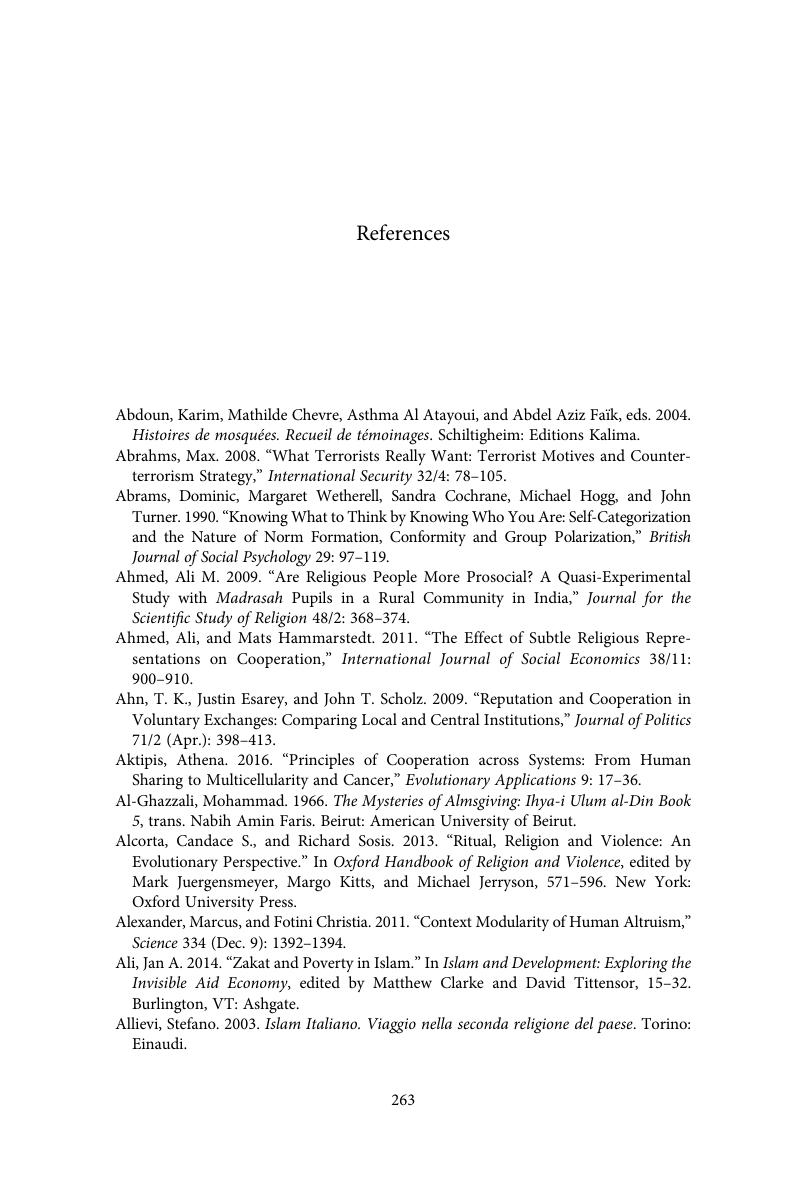Book contents
- Generating Generosity in Catholicism and Islam
- Cambridge Studies in Economics, Choice, and Society
- Generating Generosity in Catholicism and Islam
- Copyright page
- Dedication
- Contents
- Figures
- Tables
- Acknowledgments
- Abbreviations
- 1 Introduction
- 2 The Charitable Consequences of Institutions and Rituals in Catholicism and Islam
- 3 Generosity, Public Goods Provision, and Religious Beliefs in Catholicism and Islam
- 4 The Meaning of Religion to Catholics and Muslims
- 5 Religious Communities, Prosociality, and Connections to Others
- 6 Belief, Belonging, and Giving in Catholic Parishes and Muslim Associations
- 7 Religious Minorities and Generosity
- 8 The Welfare State, Religion, and Generosity
- 9 Conclusion
- Appendix
- References
- Index
- References
References
Published online by Cambridge University Press: 24 April 2018
- Generating Generosity in Catholicism and Islam
- Cambridge Studies in Economics, Choice, and Society
- Generating Generosity in Catholicism and Islam
- Copyright page
- Dedication
- Contents
- Figures
- Tables
- Acknowledgments
- Abbreviations
- 1 Introduction
- 2 The Charitable Consequences of Institutions and Rituals in Catholicism and Islam
- 3 Generosity, Public Goods Provision, and Religious Beliefs in Catholicism and Islam
- 4 The Meaning of Religion to Catholics and Muslims
- 5 Religious Communities, Prosociality, and Connections to Others
- 6 Belief, Belonging, and Giving in Catholic Parishes and Muslim Associations
- 7 Religious Minorities and Generosity
- 8 The Welfare State, Religion, and Generosity
- 9 Conclusion
- Appendix
- References
- Index
- References
Summary

- Type
- Chapter
- Information
- Generating Generosity in Catholicism and IslamBeliefs, Institutions, and Public Goods Provision, pp. 263 - 286Publisher: Cambridge University PressPrint publication year: 2018

